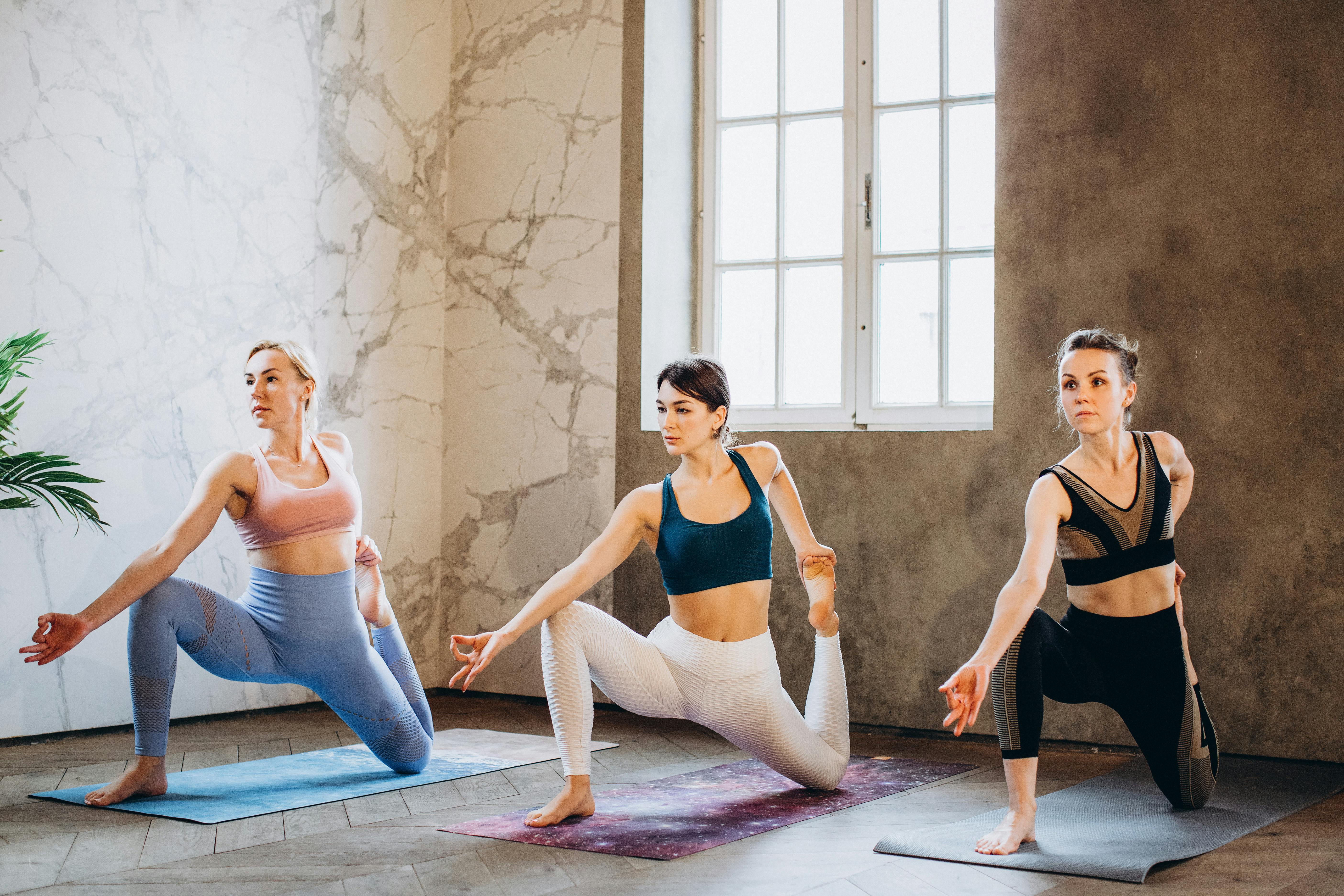Digital Breathwork: Apps & Techniques to Calm Screen-Induced Anxiety
Scrolling feeds, pop-ups, and back-to-back video calls ask our nervous systems to sprint a digital marathon. If you feel your shoulders creeping toward your ears or notice shallow chest breathing after hours online, you’re not alone. Research from the American Psychological Association shows that 71 % of U.S. adults report at least one physical symptom of stress linked to technology use. The good news: a few intentional breaths can reboot your physiology faster than closing all those browser tabs.
This guide spotlights the strongest free breathwork apps and the most evidence-backed breathing patterns you can weave into micro-breaks. You’ll finish with practical tools to lower anxiety, boost focus, and reclaim calm—no yoga mat required.
Why Breathwork Works
- Rapid influence on the autonomic nervous system
• Slow, diaphragmatic breaths increase vagal tone, nudging the body toward the parasympathetic “rest-and-digest” state (Laborde et al., 2022). - Heart-brain synchrony
• Six breaths per minute—sometimes called “resonant breathing”—optimizes heart-rate variability (HRV), a biomarker linked to emotional resilience (Lehrer & Gevirtz, 2019). - Cognitive clarity
• Controlled breathing improves attention and working memory after just five minutes, according to an fMRI study in Frontiers in Human Neuroscience (Gerritsen & Band, 2018).
Top Free Breathwork Apps for Every Learning Style
1. Breathwrk
• Best for: Quick, gamified sessions
• Stand-out feature: Real-time vibration cues sync inhale, hold, and exhale segments so you can practice eyes-closed during screen breaks.
• Evidence tie-in: The app’s signature “Calm” pattern uses 4-7-8 breathing, shown to reduce systolic blood pressure within six weeks (Khng, 2017).
2. Insight Timer
• Best for: Variety seekers
• What you get: Over 1,000 free guided breathing tracks from clinicians, athletes, and meditation teachers.
• Inclusivity note: Filters allow you to screen for secular language or cultural traditions that resonate with you.
3. Oak
• Best for: Minimalist guidance
• Highlights: A simple interface with three pre-set tracks—Deep Calm, Box Breathing, and Wim Hof–style energizing breaths—plus gentle progress tracking for motivation without pressure.
4. Smiling Mind
• Best for: Science-minded users
• Credibility: Developed by psychologists and educators, it integrates breathwork into evidence-based stress-management courses that align with Australian well-being curricula.
5. Breath Ball
• Best for: Visual learners
• Unique asset: A slowly expanding and contracting sphere on your phone or desktop makes timing intuitive. The default tempo is six breaths per minute, mirroring HRV-coherence research.
6. MyLife Meditation
• Best for: Emotion-specific relief
• How it works: A brief check-in screens your current mood and suggests breath patterns (e.g., lengthened exhale for agitation). Tailoring techniques bolsters adherence, a key predictor of long-term benefits (Schmid et al., 2020).
Breathing Patterns You Can Practice Between Tabs
Box Breathing (4-4-4-4)
Originating from tactical training, this equal-length pattern stabilizes the nervous system without causing dizziness. A randomized trial with nursing students found that four minutes of box breathing cut self-reported anxiety by 30 % before exams (Sowder et al., 2021).
Recommended use: On a two-minute micro-break after intense coding or writing.
4-7-8 Breathing
Popularized by integrative medicine pioneer Dr. Andrew Weil, this method lengthens the exhalation phase, boosting carbon dioxide tolerance and promoting relaxation. In a 2019 cardiology study, participants practicing 4-7-8 breathing for eight weeks saw resting heart rates drop by an average of six beats per minute.
Recommended use: When notifications spike your heart rate—before replying to that urgent Slack.
Resonant Breathing (5-6 Breaths per Minute)
Also called coherent breathing, this pattern maximizes HRV by synchronizing respiratory and cardiovascular rhythms. Two sessions a day (five minutes each) improved depression scores by 40 % in a veteran population (Brown & Gerbarg, 2020).
Recommended use: A scheduled lunchtime practice to sustain afternoon cognition.
1:2 Exhale-Lengthening
Extending the exhale to twice the inhale triggers baroreceptors that down-shift sympathetic arousal. It’s ideal when you feel jittery after caffeine or cliff-hanger emails.
Recommended use: Silent practice during a meeting; no one will notice except your calmer frontal cortex.

*1. Engage: Sit tall, shoulders relaxed. Inhale through the nose for a smooth count of four.
*2. Explore: Hold the breath gently for four, noticing the subtle pause without straining.
*3. Exit: Exhale through the mouth for four and rest for four before the next cycle.
Crafting Your Two-Hour Tech-Tension Reset
Digital strain builds in waves roughly every 90–120 minutes, matching the body’s ultradian rhythms. Here’s a sample framework you can adapt:
• Minute 0: Silence push notifications and set a timer for focused work.
• Minute 60: Stand, roll the shoulders, and open a breath app. Complete two minutes of box breathing.
• Minute 90: Hydrate and do six cycles of 1:2 breathing while walking to the window.
• Minute 120: Take a full ten-minute break—eyes away from screens—and practice resonant breathing with Breath Ball.
This cycle respects biological energy peaks and troughs, preventing the all-too-common end-day crash.
Tips to Stay Consistent
-
Pair breaths with habitual actions
• Example: Every time you click “Join meeting,” start one slow exhale. Habit stacking removes the guesswork. -
Use visible anchors
• A sticky note with “4-7-8?” on your monitor turns passive intention into active behavior. -
Track sensation, not perfection
• Instead of ‘Did I breathe exactly six times per minute?’, ask ‘Do I feel softer around the eyes and jaw?’. This shifts focus from performance to embodied awareness. -
Involve community
• Invite a colleague to a two-minute shared practice. A study in the Journal of Occupational Health showed that group micro-breaks improved morale by 15 % more than solo breaks. -
Celebrate micro-wins
• Log streaks in your chosen app. Dopamine rewards reinforce habit loops, making tomorrow’s practice easier.
FAQs
• “I can’t feel my diaphragm—am I doing it wrong?”
Not at all. Place a hand on your belly and imagine inflating the lower ribs. Even slight expansion signifies diaphragmatic engagement.
• “What if I get dizzy?”
Lightheadedness usually means you’re breathing too forcefully. Soften the inhale and return to a natural pace. If dizziness persists, consult a healthcare professional.
• “Isn’t breathwork basically meditation?”
Breathwork can stand alone or complement meditation. It offers a concrete anchor—your inhale and exhale—without the broader cognitive training component. People who find stillness hard often appreciate this tangible focus.
When to Seek Professional Support
Breathwork is potent, yet it isn’t a cure-all. If anxiety disrupts sleep, appetite, or daily functioning, consider layering professional therapy. Cognitive-behavioral therapy (CBT) with breath training has shown superior outcomes over CBT alone for generalized anxiety (Meuret et al., 2018). A licensed therapist can tailor breathing cadence to your unique physiology, especially if you have respiratory conditions or trauma history.
Key Takeaways
• Controlled breathing reliably shifts the body from fight-or-flight to rest-and-restore within minutes.
• Free, high-quality apps—Breathwrk, Insight Timer, Oak, Smiling Mind, Breath Ball, and MyLife—remove financial barriers.
• Evidence-backed patterns like box breathing, 4-7-8, resonant breathing, and 1:2 exhale-lengthening suit different stress moments.
• Building micro-break rituals around ultradian rhythms sustains energy and focus in screen-heavy workdays.
Breathe in confidence, breathe out tension. Your lungs are a built-in tool kit; your screen break is the doorway to use it. Start with one cycle now, feel the ripple of calm, and let it power the rest of your day.
